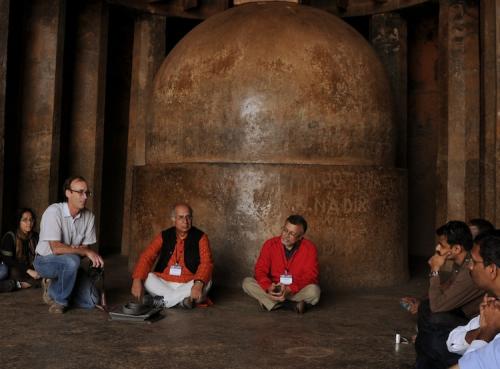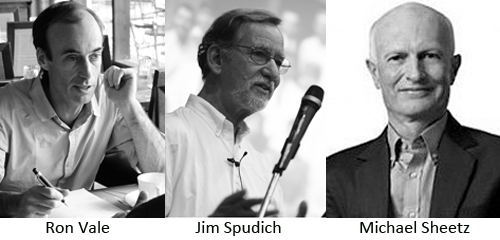NCBS adjunct faculty and affiliates win the Lasker
One of the most prestigious awards in science, the 2012 Albert Lasker Award for Basic Medical Research, was announced yesterday, and all three recipients - Jim Spudich, Ron Vale and Michael Sheetz - have strong links to NCBS, and India generally.
Jim Spudich, from Stanford, has had a long association with NCBS and is currently adjunct faculty here. Like Vale and Sheetz, Spudich's work has focused on 'molecular motors' - intracellular molecules that can harvest chemical energy to generate force. Spudich's group has been at the forefront of discovering how the motors that power muscle and other intracellular movements -myosins- do their jobs. In particular, his laboratory has developed in vitro assays that measure the speed and force produced by myosins -and are exemplars of experimental elegance. The assays allow researchers to determine the movements and forces produced by single myosin molecules. At inStem, Spudich is now leading a team investigating the role of myosin and other proteins in inherited cardiomyopathies, visiting inStem/NCBS three to four times per year.
"'It's a great inspiration for us to have Jim as an adjunct faculty at NCBS/inStem" says the Dean of NCBS, Satyajit Mayor. "Having worked closely with Jim I find his enthusiasm for science infectious, and his approach towards building an appropriate environment for doing science of great value to all of us. Jim being awarded The Lasker Prize is a matter of great pride for all of us here, and we are especially happy that Anna (his wife) and himself spend a lot of their time in Bangalore."
Spudich also collaborates with NCBS professor R. Sowdhamini, on a project funded by a Human Frontier Science Program grant. Having identified several interesting myosins (and myosin-related proteins) from a genome analysis, they are now investigating their molecular structure and and biophysical characteristics. The work might illuminate how cardiomyopathies caused by mutations in these proteins actually arise, says Sowdhamini. And, she adds, "Jim is always fun to interact with, I have been amazed at his in-depth knowledge of myosins, and his rational scientific thinking. His contributions to single molecule studies of myosins are remarkable. He is a congenial collaborator and I have learnt a great deal by talking to him - how to be unhurried for instance!".
Ron Vale, now at UCSF, is the co-discoverer of the second major motor molecule - kinesin. To do its work, kinesin interacts with a dynamic system of intracellular rods called microtubules. Working together they power, for example, chromosome movements during cell division and the transport of intracellular cargo. Vale visits NCBS regularly and spent a sabbatical year here in 2008-09. In his visits to India, Vale has devoted much of his time to capacity building in the biomedical sciences. He spearheaded the indiabioscience.org website, a portal that provides much needed information and guidance for the community. His passionate belief in the importance of mentoring also led him to initiate the annual Young Investigator's Meetings, where postdocs and young biomedical faculty can engage with senior colleagues from India and around the world. The fifth YIM, 2013, will be held next February in Jodhpur.
The third winner, Michael Sheetz, from Columbia University University and also director of the Mechanobiology Institute at the National University of Singapore, has contributed to our understanding of both kinesin and myosin, collaborating with Vale in the discovery of kinesin, and Spudich in the elaboration of many aspects of myosin’s biology. Sheetz too maintains links to several NCBS research teams, and has been a frequent visitor.
The Lasker Awards stretch back to 1945 and provide an honararium of US$250,00 to recipients. Mary Woodard Lasker, an American philanthropist, played a pivotal role in convincing the US government to increase funding for cancer, and other, medical research from the 1960s onwards. The Lasker Awards are also a strong predictor of even greater honours. According to the Lasker Foundation website, “eighty-one Lasker laureates have received the Nobel Prize, including 29 in the last two decades.” There are four different categories of awards but it is the one that Spudich, Vale and Sheetz have won - the Albert Lasker Award for Basic Medical Research - that is most predictive. Between 1997 and 2007, for example, of the 25 awardees in this category, 12 went on to win a Nobel.
For more Information:
See the very full account of the achievements of Vale, Spudich and Sheetz on the Lasker Foundation website, and read the media coverage on the awards at the NY Times.

Ron Vale: impromptu mentoring while on an excursion during the 2012 Young Investigator's Meeting (near Pune)

Comments
Post new comment